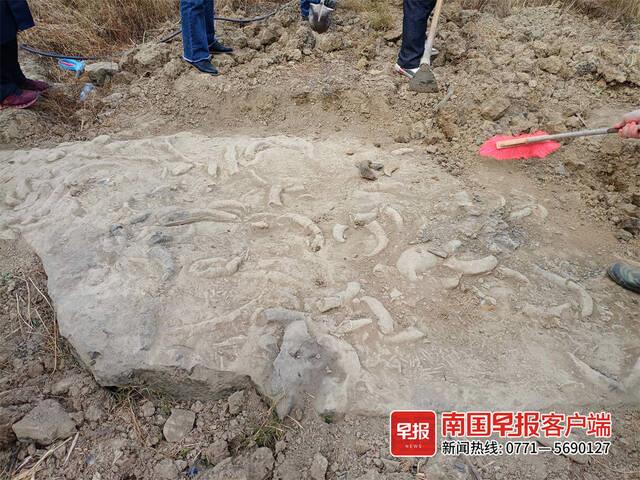Huanjiang villagers find 300m-year-old coral fossils
On Jan 25, villagers in Jixiang village, Minglun town, Huanjiang Maonan autonomous county found fossils that looked like sheep horns. According to the preliminary analysis, the staff at the Natural History Museum of Guangxi thinks these may be coral fossils from the Paleozoic ocean, some 300 to 400 million years ago.
These fossils cover an area of about 6 square meters, and were accidentally discovered by villagers who were doing farm work at the foot of the mountain. During the Spring Festival holiday, some young people reported the matter to the media because they did not know whether the fossils were valuable or how to deal with them.
There are many kinds of coral, and it is difficult to classify and identify them by appearance alone. It is necessary to slice the fossils open to observe their internal structures. Only then can experts determine their genera and species. Coral fossils are common in the marine strata of Guangxi, and have certain scientific research value.
"The best use for coral fossils is to display them in a natural history museum so that they help educate the public about science," said Fu Qiongyao, a staff member of the Natural History Museum of Guangxi. He suggested that the villagers protect the site, and wait for experts to come to the site for analysis.

Coral fossils are found by villagers in Jixiang village, Minglun town, Huanjiang Maonan autonomous county. [Photo/Nanguo Morning Post]














